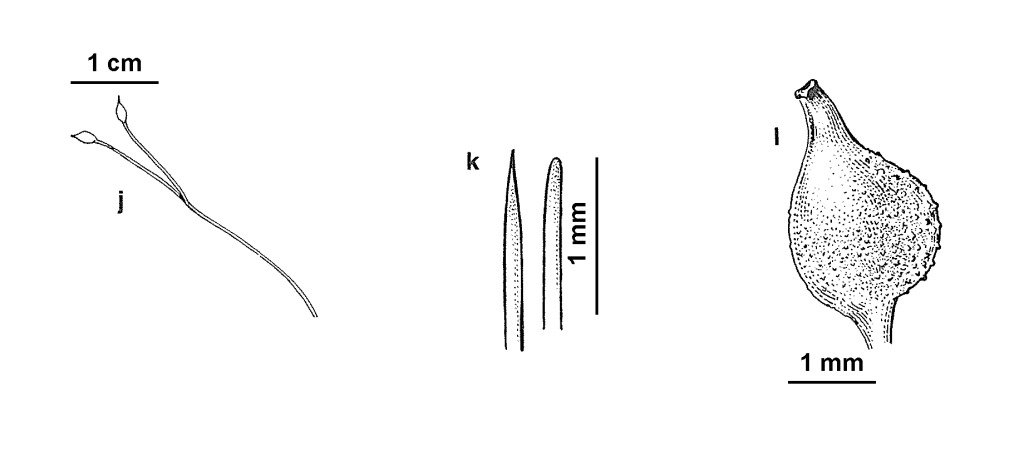Ruppiaceae
Submerged annual or perennial aquatic herbs; rhizomes elongate. Leaves alternate, sheathing at base; ligule absent. Inflorescence 2-flowered, terminal, spike-like, initially enclosed by 2 sub-opposite leaves. Flowers bisexual, very small; perianth absent; stamens 2, anthers sessile, pollen reinform; carpels (2–)4–12(–26), free, 1-locular; ovary ovoid; stigma ± sessile and peltate. Fruit drupe-like with outer tissues membranous or spongy, inner tissues hard and bony; seed without endosperm.
Monogeneric family with c. 7 species worldwide, 4 in Australia and Victoria.
Ruppia is sometimes placed in Potamogetonaceae. Recent molecular evidence suggests it is better placed with Cymodoceaceae (Les & Tippery 2013), or constitutes a separate, monogeneric family. The latter is the currently held view by APG IV (2017), and is followed in this treatment.
Pollination occurs below the water surface and/or on the surface of an air-bubble, or it may occur on the surface of the water.
 Spinning
Spinning


